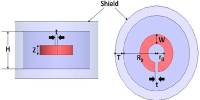Professor Hwang Jae-yoon’s team at DGIST (President: Kuk Yang) created a “deep learning-based ultrasound hologram generation framework” technology that allows for the free configuration of focused ultrasound in real time based on holograms. It is anticipated that in the future it will serve as a fundamental piece of technology for precise brain stimulation and treatment.
Ultrasound is a safe technology even used for prenatal examination. Recent research has examined ultrasound techniques for brain stimulation and treatment since they can stimulate deep brain regions without requiring surgery. The results show that ultrasound brain stimulation has truly benefited conditions like Alzheimer’s disease, depression, and pain.
However, the issue is that the current technology concentrates ultrasound into a single small point or a big circle for stimulation, making it challenging to selectively stimulate linked portions of the brain where multiple areas interact with each other at the same time.
A system that uses the hologram concept to focus ultrasound freely on a specific location has been presented as a solution to this problem, but it has drawbacks, including poor precision and a lengthy computation process to create a hologram.
In order to get beyond these restrictions, Professor Hwang Jae-yoon’s team at DGIST suggested a deep learning-based learning architecture that can embody free and accurate ultrasound focusing in real time.
We applied deep learning technology to ultrasound holograms proposed relatively recently. As a result, we developed a technology that can freely, quickly and accurately generate and change the form of ultrasound beams. We hope that the results of this research are used in patient-specific precision brain stimulation technology and general ultrasound fields (ultrasound imaging, thermal therapy, etc.).
Professor Hwang Jae-yoon
Because of this, Professor Hwang’s team was able to show that it was possible to focus ultrasound into the desired form more precisely in a hologram creation time that was 400 times faster than the current ultrasonic hologram generating algorithm approach.
The study team’s deep learning-based learning framework develops ultrasonic hologram generation skills through self-supervised learning. Self-supervised learning is a technique for teaching a computer to learn by itself to find a rule for data that has no solution.
The study team proposed an approach for learning to create ultrasonic holograms, a deep learning network tailored for creating ultrasonic holograms, and a new loss function while demonstrating the reliability and superiority of each element through simulations and actual trials.
DGIST Department of Electrical Engineering and Computer Science Professor Hwang Jae-yoon said, “We applied deep learning technology to ultrasound holograms proposed relatively recently. As a result, we developed a technology that can freely, quickly and accurately generate and change the form of ultrasound beams,” and added, “We hope that the results of this research are used in patient-specific precision brain stimulation technology and general ultrasound fields (ultrasound imaging, thermal therapy, etc.).”
Meanwhile, this research was carried out with the Ministry of Science and ICT’s Four Major Institutes of Science and Technology Support Program. Researcher Lee Moon-hwan of DGIST Information and Communication Engineering Research Center, Ph.D. students Ryu Ha-min and Yoon Sang-yeon of the Department of Electrical Engineering and Computer Science, and GIST Professor Kim Tae’s team.
An international academic publication in the relevant subject, IEEE Transactions on Ultrasonics, Ferroelectrics, and Frequency Control, featured the study’s findings as the cover paper for its December issue.
















